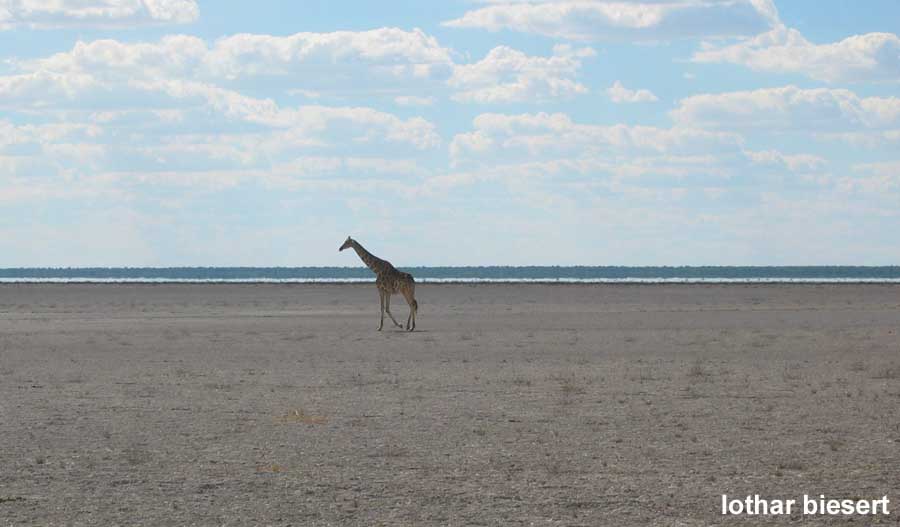
Etosha National Park
The Etosha National Park is located in the north of Namibia around the Etosha Pan. The Etosha Pan is a salt lake in the Kalahari Depression that turns into a shallow lake when it rains. Most of the time the lake is dry and has a salty clay layer on the surface. This white salt pan is called "Etosha" by the locals of the Ovambo tribe. In their language, Etosha means something like large, white surface.
The Etosha National Park was placed under nature protection by the German colonial government in 1907 because the animal population was significantly reduced through poaching. Elephants and antelopes were extinct in the area at that time. Thanks to the national park, the domestic animal populations were able to recover. The Etosha National Park covers an area of around 23,000 km², which is about the size of Israel.
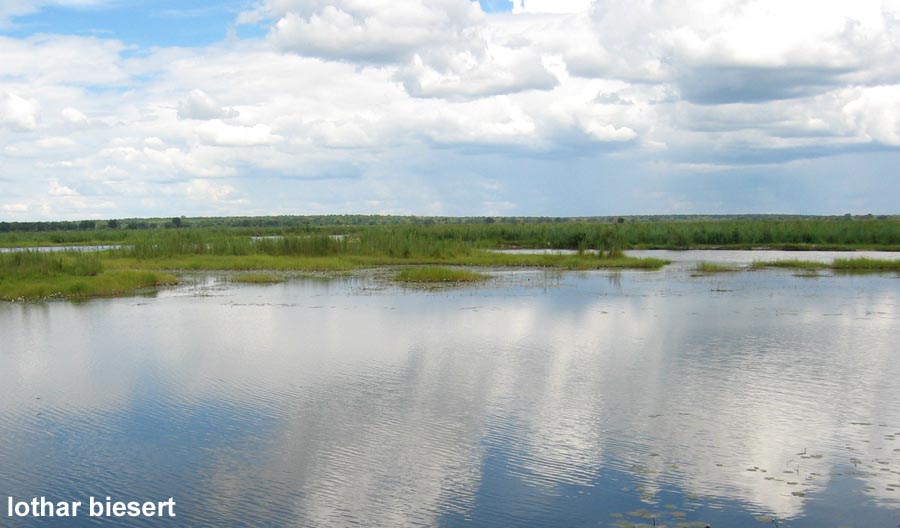
The Etosha Pan
When the Etosha Pan fills with water, it becomes an attraction for many animals in the area. Etosha Lake is relatively shallow, the water is often only a few centimeters deep. It is not easy for animals and plants to survive here. It is either a dry salt desert or a wetland. These are very different conditions. Therefore, most of the animals are very mobile. When it is dry they move on but when there is water life explodes. But there are also water holes that are fed by springs, this is where animals gather in the dry season.
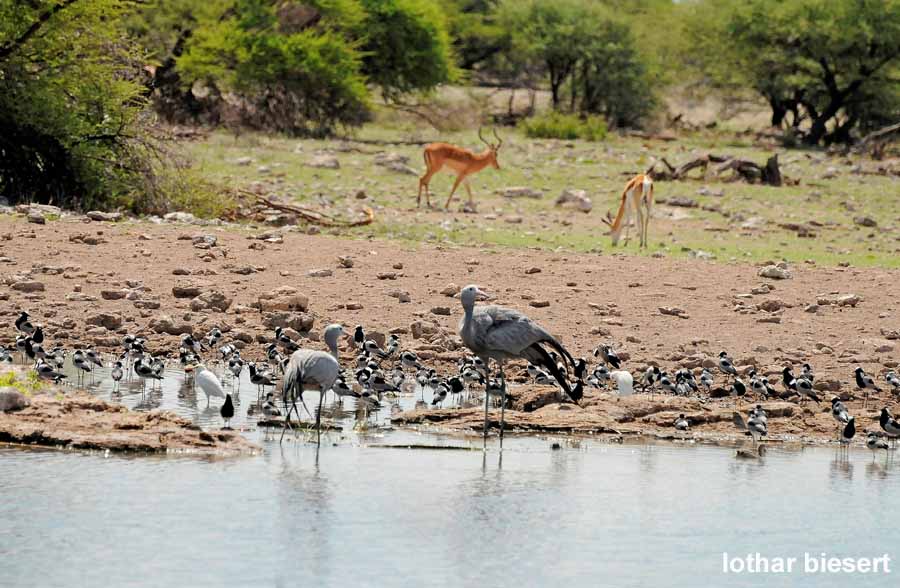
Animals of the Etosha Park
There are many animals in the Etosha National Park, bird watching is particularly good here. The wide, shallow water areas attract flamingos and migratory birds. At the water holes you can see elephants, giraffes, zebras, warthogs, antelopes and other animals of the savannah. Lions and other predators are rarely seen, they are hidden in the tall grass. You can see hippos and crocodiles in the waterholes. On the ground you can find snakes, beetles and lizards.
For more photos of animals in Namibia > Etosha picture gallery
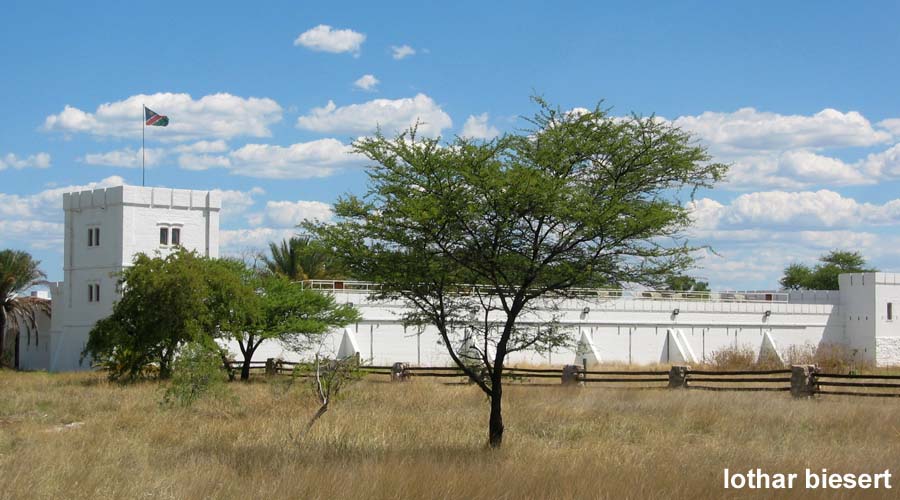
Fort Namutoni
Fort Namutoni is the visitor center of the Etosha National Park. It is also a hotel resort with around 40 rooms in a camp around the former castle. There are hotel rooms, chalets and a campsite. Fort Namutoni was built in 1897 by the German colonial power, who needed a guard post at the northern end of their colony South West Africa in order to dam the cattle plague. In 1904 the fort was attacked by the Ovambo, the 7 soldiers of the station were able to repel the attack of 500 warriors and then withdrew to Tsumeb. The fort was looted. The fort was rebuilt by the German forces in 1905. During the First World War, South Africa occupied the country in 1915. After a long struggle against South Africa, Namibia gained independence in 1990.
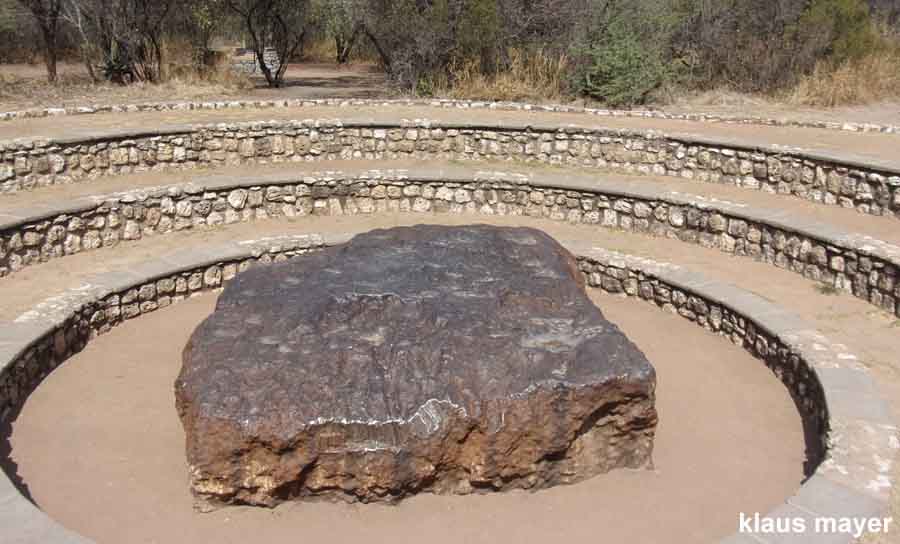
Hoba Meteorite
The Hoba meteorite is the largest meteorite found on Earth until today. The iron lump is around 2.7 m long and just as wide. It is about 90 cm high and weighs over 50 t. The Hoba meteorite fell to Earth around 80,000 years ago, its age is estimated to 200-400 million years.
The meteorite is located on the Hoba Farm, around 20 kilometers west of Grootfontein. The place is over 150 kilometers away from Etosha National Park. Grootfontein is on the way to the Caprivi National Park and is suitable as a stopover.
Etosha Map
ads
Etosha National Park
ads
ads


